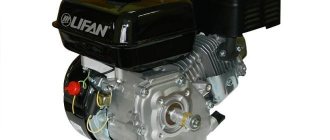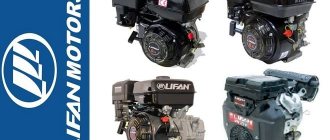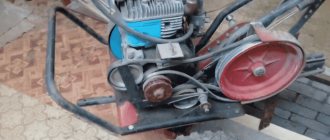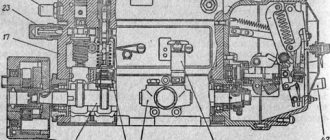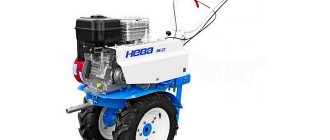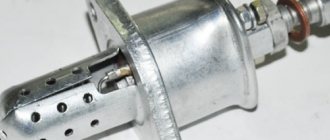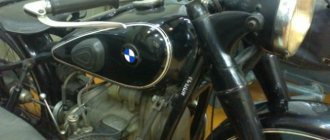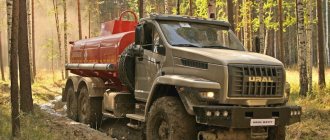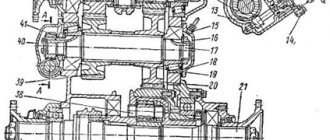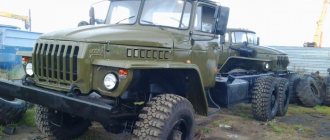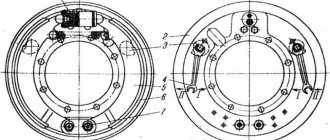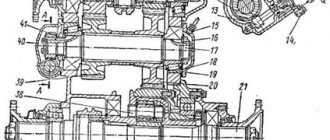OKA-Turbo or how to make a motorcycle
Residents of the capital's Yasenevo district have been shocked for the past 4 years at the sight of a tall man in a red cap riding an unusual-looking motorcycle.
What's shocking about this, you ask? There are so many bikers these days. And there are… a lot of motorcycles, including custom ones, in short. Yes, there is plenty of this goodness on the streets of the capital. And in the outback, craftsmen sometimes sculpt even more from scrap materials... However, often “home-made” motorcycles are made from donor motorcycles. And the bike that will be discussed here was taken as a donor almost equally from both two- and four-wheeled vehicles.
But first things first…
The creator of the motorcycle is called Volodya. Well, let’s call the engine on which he drives around the capital and the nearest Moscow suburbs “OKA-Turbo”. No, the bike, of course, has an official name, which was assigned to it during registration - “Homemade”... But what kind of name is this for a road motorcycle monster, in front of which cars make way.
How did the idea to create a monster come about?
If you remember, in the early to mid-90s of the last century, on public roads (depending on the region, of course, but in any case in Moscow and the Moscow region) you could mainly find Urals, Dnieper, Java and Izhi. Tulas were less common. There were also Chisettes. But the main two-wheeled means of transportation on the roads was still the Ural or the Dnieper (you can argue with me).
At about the same time, the West was actively blowing into the country of young democracy. Customs from such films as “Harley Davidson and the Marlboro Man” and “Easy Rider” excited the minds of young bikers and forced them to modify their motorcycles to any extent, just to be different from the crowd. But if in the States there was plenty to choose from, starting with the engine and ending with the light bulbs in the stops, then in our country, apart from the engine and frame from the Urals or the Dnieper, there was nothing to choose from.
The rare imported motorcycles that appeared at that time were no better (mainly due to their wear and tear), and it was completely unrealistic to buy a Harley (as, indeed, for many now). At that time, in order not to ride in the Urals “like everyone else,” the owner of our OKI-Turbo rode in the Urals, converted for enduro. This was clearly not enough, and Volodya was about 195 cm tall, and therefore moving around the city on such a motorcycle, and especially on long trips, was not particularly convenient. Along with this, the Ural, the enduro, and other similar custom cars were constantly out of adjustment, and they didn’t drive very well. But the main problem is their darkness! Almost identical!
Therefore, one day (no one remembers how) the idea was born to create a motorcycle with a car engine. In general, looking ahead, it should be noted that I liked the idea because it assumed, in general, a low final cost of the entire apparatus. The budget was set at... $1000. Yes, one thousand US dollars! Well, indeed, at that time a used Japanese motorcycle cost about 2-3 thousand dollars, so making a self-propelled motorcycle more expensive was simply stupid. And looking ahead – it was a success! But for 1200))
Selection of components:
Engine
It must be said that the idea of building a motorcycle with an engine from the domestic automobile industry was not new. There have already been custom cars built on the basis of the engine from the “Ushasty” “Zaporozhets” (after all, a V-shape!). But... for now it was all a lot of handicraft, with many controversial and, at times, unreliable decisions. Therefore, the engine from OKI was taken as a basis. An important role was played by the low cost of the engine - only 400 bucks! Yes, and 36 hp. at that moment it seemed almost through the roof. Therefore, based on knowledge of physics, 10th grade geometry and intuition, a group of friends led by the future owner began sculpting the apparatus.
No sooner said than done: the engine was purchased, brought home (and the entire motorcycle was assembled at home - in a large room of three rubles in a sixteen-story building) - now all that was left was to come up with the motorcycle itself... However, there was no idea of what exactly it would look like. It was only clear that it had to be a chopper with a large wheelbase, since the driver is 195 cm tall, a wide steering wheel (again due to the length of the driver’s limbs) and, of course, a wide rear wheel... from a car (wheels according to the catalog then cost some money) then completely unrealistic money).
Box
We’ve decided on the engine – what kind of gearbox will it be? The choice fell on the Dnepr gearbox: clear, semi-automatic, with clear gear shifting and, most importantly, with reverse gear! At that time they couldn’t even estimate the weight of the planned motorcycle. But how to connect a car engine with a motorcycle gearbox? As the author of “Turbo Oki” now recalls, this was the main stumbling block. On one of the motorcycles of this type known at that time, the joint was made... rubber! Is it worth talking about the reliability of such a solution?
Finally, after much thought, with the help of the OIK (Main Customizer Tool) - a grinder, we simply bought a gearbox housing from the OKI, cut off a part of the required thickness from it, ordered an aluminum faceplate from the factory, welded it into the cut piece of the gearbox - here you have a reliable , and most importantly, aesthetic articulation!
Having connected the engine and gearbox into one, the guys came across a new problem: the cardan was moving to the side. Or rather, due to the fact that the engine axis was in the center, the cardan could not be connected to the rear wheel gearbox. As a result, someone came up with a simple idea - they simply turned the engine around the vertical axis by 1-2 cm and everything “grew together.”
Frame
According to the documents, the frame was welded on the NIIAP slipway. Well, in fact, it’s in the owner’s kitchen. The hot-cold bushing method was used at all joints. In this case, one part of the pipe was heated on a burner or “baked” in the oven of the wonderful stove of the Lysva system, and the other part in the refrigerator, and then one pipe was inserted into the other.
Since the OKI engine was slightly wider than the Ural engine, they decided to expand the standard frame from the Urals (M-67). However, the new engine was also higher than the native Ural engine. Therefore, once again we simply took and grinded (in general, this tool became practically the main one when creating a motorcycle) the front steering column with 4 pipes extending from it and welded it to other, longer pipes. The same was done with the rear mounts of the swingarms to the frame. As a result, the wheelbase of the motorcycle turned out to be 1760 cm – approximately the same as that of the Kawasaki “Min Streak”.
By the way, the creator paid the main attention to the rigidity and reliability of the design (sometimes, despite the quite appropriate cries of friends “Well, why the hell is there such a reserve.”). As a result, we got 40 kg/cm (!), when 12 was enough! But the author fought and resisted to the last, so it took incredible efforts for his friends to convince him that all the calculations were correct and such a reserve was unjustified. By the way, practically the only part that broke after the work was completed - the rear hub - burst after 3 months, was replaced and has already covered 70 thousand km since then!
Carburetors and ignition
Tuning a Ural motorcycle engine affects all engine systems, including ignition and carburetors. It is recommended to read the information: how to properly configure Ural carburetors. The standard ignition is so outdated that it is not even suitable for everyday driving, let alone anything else. It is desirable to install a microprocessor ignition with the possibility of an automatic advance angle. This article will help you set up the electronic ignition system. Ideally, such an ignition would be installed with a programmable controller with the ability to adjust the firmware. Such ignition systems have another useful feature - speed cut-off. This will prevent over-torque of a heavily boosted engine. Well, for maximum spark strength, in combination with a new ignition, you can use a coil from the Oka or Gazelle. Branded high-voltage wires with silicone insulation and internal resistance are required, for example from Tesla from VAZ 2108. They will ensure an uninterrupted spark in any weather and eliminate the possibility of spark breakdown to ground. As for carburetors, you will need to install Japanese vacuum carburetors with a diffuser diameter of 32 to 36 mm, followed by selection of jets, synchronization and adjustment with a gas analyzer. Tuning on a dynamometer is highly advisable, where you can test different settings and ignition timing and get the most out of your motorcycle tuning!
Dmitry IVAIKIN
What if you build a motorcycle yourself, and with a reliable car engine? The choice fell on the affordable and relatively lightweight Oka engine. Since he performed well in a car, why not trust him to drive a motorcycle? But the “Ural” frame turned out to be cramped. I had to create the chassis anew - I took only the gearbox, gearbox and partly the clutch mechanism from the Ural.
Although I am a car mechanic, I can’t handle all the ideas myself. The guys from one motorcycle service center helped a lot. I connected the engine to the gearbox and brought the resulting unit to them. The guys listened, nodded politely, and then built the chassis as experience and common sense told them. I assembled and painted the motorcycle myself.
The connection of the engine to the gearbox began with the modification of the “Okovsky” flywheel. At the factory it was processed, grooves were machined for the springs, and six holes were drilled into which guide pins for the “Ural” clutch drive discs are now pressed. We also made an adapter between the engine and gearbox. Although the engine is already balanced, I installed it on the gearbox mounts from the Gazelle. The result is no vibration.
What needs to be done to install a monocarburetor
If you install one carburetor on a Ural motorcycle, this will largely solve this problem. This is a possible, although not ideal, solution. In bringing the plan to life, certain difficulties will have to be overcome. Necessary:
- Clear space above the engine crankcase. This is where it is most convenient to secure the intake tract and connecting flange.
- Make an intake manifold.
- Select a suitable carburetor according to the parameters.
All this will require a significant investment of time and money.
Motorcycle with engines from OKI
Good day. The question is, do you think it makes sense to build a motorcycle with an OKI engine? Thanks in advance.
Of course have ! But the motorcycle turns out not as beautiful as with a ZAZ engine. There was an article in MOTO magazine about such a mot.
Beauty, of course, is a terrible force, but in my opinion the characteristics of the Oka are better than the ZAZ, and a lot has already been built with the ZAZ. The most important argument after an accident is the engine from Oka
